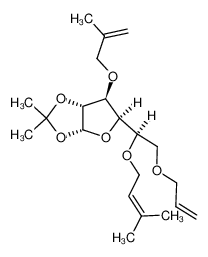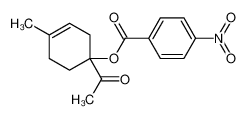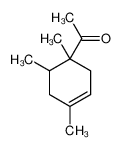1.Identification
1.1 GHS Product identifier
| Product name | isoprene |
|---|
1.2 Other means of identification
| Product number | - |
|---|---|
| Other names | 2-methyl-buta-1,3-diene |
1.3 Recommended use of the chemical and restrictions on use
| Identified uses | For industry use only. Intermediates |
|---|---|
| Uses advised against | no data available |
1.4 Supplier's details
| Company | MOLBASE (Shanghai) Biotechnology Co., Ltd. |
|---|---|
| Address | Floor 4 & 5, Building 12, No. 1001 North Qinzhou Road, Xuhui District, Shanghai, China |
| Telephone | +86(21)64956998 |
| Fax | +86(21)54365166 |
1.5 Emergency phone number
| Emergency phone number | +86-400-6021-666 |
|---|---|
| Service hours | Monday to Friday, 9am-5pm (Standard time zone: UTC/GMT +8 hours). |
2.Hazard identification
2.1 Classification of the substance or mixture
Flammable liquids, Category 1
Germ cell mutagenicity, Category 2
Carcinogenicity, Category 1B
Hazardous to the aquatic environment, long-term (Chronic) - Category Chronic 3
2.2 GHS label elements, including precautionary statements
| Pictogram(s) |   |
|---|---|
| Signal word | Danger |
| Hazard statement(s) | H224 Extremely flammable liquid and vapour H341 Suspected of causing genetic defects H350 May cause cancer H412 Harmful to aquatic life with long lasting effects |
| Precautionary statement(s) | |
| Prevention | P210 Keep away from heat, hot surfaces, sparks, open flames and other ignition sources. No smoking. P233 Keep container tightly closed. P240 Ground and bond container and receiving equipment. P241 Use explosion-proof [electrical/ventilating/lighting/...] equipment. P242 Use non-sparking tools. P243 Take action to prevent static discharges. P280 Wear protective gloves/protective clothing/eye protection/face protection. P201 Obtain special instructions before use. P202 Do not handle until all safety precautions have been read and understood. P273 Avoid release to the environment. |
| Response | P303+P361+P353 IF ON SKIN (or hair): Take off immediately all contaminated clothing. Rinse skin with water [or shower]. P370+P378 In case of fire: Use ... to extinguish. P308+P313 IF exposed or concerned: Get medical advice/ attention. |
| Storage | P403+P235 Store in a well-ventilated place. Keep cool. P405 Store locked up. |
| Disposal | P501 Dispose of contents/container to ... |
2.3 Other hazards which do not result in classification
none
3.Composition/information on ingredients
3.1 Substances
| Chemical name | Common names and synonyms | CAS number | EC number | Concentration |
|---|---|---|---|---|
| isoprene | isoprene | 78-79-5 | none | 100% |
4.First-aid measures
4.1 Description of necessary first-aid measures
General advice
Consult a physician. Show this safety data sheet to the doctor in attendance.
If inhaled
Fresh air, rest. Refer for medical attention.
In case of skin contact
Rinse skin with plenty of water or shower. Remove contaminated clothes. Refer for medical attention .
In case of eye contact
First rinse with plenty of water for several minutes (remove contact lenses if easily possible), then refer for medical attention.
If swallowed
Rinse mouth. Do NOT induce vomiting. Refer for medical attention .
4.2 Most important symptoms/effects, acute and delayed
Excerpt from ERG Guide 128 [Flammable Liquids (Water-Immiscible)]: Inhalation or contact with material may irritate or burn skin and eyes. Fire may produce irritating, corrosive and/or toxic gases. Vapors may cause dizziness or suffocation. Runoff from fire control or dilution water may cause pollution. (ERG, 2016)
Vapor produces no effects other than slight irritation of the eyes and upper respiratory tract. Liquid may irritate eyes; like gasoline. (USCG, 1999)
4.3 Indication of immediate medical attention and special treatment needed, if necessary
Immediate first aid: Ensure that adequate decontamination has been carried out. If patient is not breathing, start artificial respiration, preferably with a demand valve resuscitator, bag-valve-mask device, or pocket mask, as trained. Perform CPR if necessary. Immediately flush contaminated eyes with gently flowing water. Do not induce vomiting. If vomiting occurs, lean patient forward or place on the left side (head-down position, if possible) to maintain an open airway and prevent aspiration. Keep patient quiet and maintain normal body temperature. Obtain medical attention. /Aliphatic hydrocarbons and related compounds/
5.Fire-fighting measures
5.1 Extinguishing media
Suitable extinguishing media
Use fine spray or fog to control fire by preventing its spread and absorbing some of its heat. Use water spray to keep fire-exposed containers cool. Fight fire from protected location or maximum possible distance.
5.2 Specific hazards arising from the chemical
Excerpt from ERG Guide 128 [Flammable Liquids (Water-Immiscible)]: HIGHLY FLAMMABLE: Will be easily ignited by heat, sparks or flames. Vapors may form explosive mixtures with air. Vapors may travel to source of ignition and flash back. Most vapors are heavier than air. They will spread along ground and collect in low or confined areas (sewers, basements, tanks). Vapor explosion hazard indoors, outdoors or in sewers. Those substances designated with a (P) may polymerize explosively when heated or involved in a fire. Runoff to sewer may create fire or explosion hazard. Containers may explode when heated. Many liquids are lighter than water. Substance may be transported hot. For hybrid vehicles, ERG Guide 147 (lithium ion batteries) or ERG Guide 138 (sodium batteries) should also be consulted. If molten aluminum is involved, refer to ERG Guide 169. (ERG, 2016)
Special Hazards of Combustion Products: Toxic vapors are generated when heated Behavior in Fire: May polymerize in containers and explode (USCG, 1999)
5.3 Special protective actions for fire-fighters
Wear self-contained breathing apparatus for firefighting if necessary.
6.Accidental release measures
6.1 Personal precautions, protective equipment and emergency procedures
Use personal protective equipment. Avoid dust formation. Avoid breathing vapours, mist or gas. Ensure adequate ventilation. Evacuate personnel to safe areas. Avoid breathing dust. For personal protection see section 8.
6.2 Environmental precautions
Evacuate danger area! Consult an expert! Remove all ignition sources. Personal protection: complete protective clothing including self-contained breathing apparatus. Do NOT wash away into sewer. Do NOT let this chemical enter the environment. Collect leaking liquid in sealable containers. Cover the spilled material with inert absorbent. Then store and dispose of according to local regulations.
6.3 Methods and materials for containment and cleaning up
SRP: Wastewater from contaminant suppression, cleaning of protective clothing/equipment, or contaminated sites should be contained and evaluated for subject chemical or decomposition product concentrations. Concentrations shall be lower than applicable environmental discharge or disposal criteria. Alternatively, pretreatment and/or discharge to a POTW is acceptable only after review by the governing authority. Due consideration shall be given to remediation worker exposure (inhalation, dermal and ingestion) as well as fate during treatment, transfer and disposal. If it is not practicable to manage the chemical in this fashion, it must meet Hazardous Material Criteria for disposal.
7.Handling and storage
7.1 Precautions for safe handling
Avoid contact with skin and eyes. Avoid formation of dust and aerosols. Avoid exposure - obtain special instructions before use.Provide appropriate exhaust ventilation at places where dust is formed. For precautions see section 2.2.
7.2 Conditions for safe storage, including any incompatibilities
Fireproof. Separated from combustible substances, reducing agents, strong oxidants, strong bases, strong acids, alcohols and acid chlorides. Cool. Keep in the dark. Well closed. Store only if stabilized. Provision to contain effluent from fire extinguishing. Store in an area without drain or sewer access.Store in a cool, dry well-ventilated location. Outside or detached storage is preferred. Separate from oxidizing materials.
8.Exposure controls/personal protection
8.1 Control parameters
Occupational Exposure limit values
no data available
Biological limit values
no data available
8.2 Appropriate engineering controls
Handle in accordance with good industrial hygiene and safety practice. Wash hands before breaks and at the end of workday.
8.3 Individual protection measures, such as personal protective equipment (PPE)
Eye/face protection
Safety glasses with side-shields conforming to EN166. Use equipment for eye protection tested and approved under appropriate government standards such as NIOSH (US) or EN 166(EU).
Skin protection
Wear impervious clothing. The type of protective equipment must be selected according to the concentration and amount of the dangerous substance at the specific workplace. Handle with gloves. Gloves must be inspected prior to use. Use proper glove removal technique(without touching glove's outer surface) to avoid skin contact with this product. Dispose of contaminated gloves after use in accordance with applicable laws and good laboratory practices. Wash and dry hands. The selected protective gloves have to satisfy the specifications of EU Directive 89/686/EEC and the standard EN 374 derived from it.
Respiratory protection
Wear dust mask when handling large quantities.
Thermal hazards
no data available
9.Physical and chemical properties
| Physical state | colourless liquid with an aromatic odour |
|---|---|
| Colour | Colorless volatile liquid |
| Odour | Mild, aromatic |
| Melting point/ freezing point | -146°C(lit.) |
| Boiling point or initial boiling point and boiling range | 34°C(lit.) |
| Flammability | Extremely flammable. |
| Lower and upper explosion limit / flammability limit | Lower flammable limit: 1.5% by volume; Upper flammable limit: 8.9% by volume |
| Flash point | -54°C |
| Auto-ignition temperature | 220°C |
| Decomposition temperature | no data available |
| pH | no data available |
| Kinematic viscosity | 0.3 mm²/s at 20-25°C |
| Solubility | In water:0.07 g/100 mL |
| Partition coefficient n-octanol/water (log value) | log Kow = 2.42 |
| Vapour pressure | 8.82 psi ( 20 °C) |
| Density and/or relative density | 0.681g/mLat 20°C |
| Relative vapour density | 2.35 (vs air) |
| Particle characteristics | no data available |
10.Stability and reactivity
10.1 Reactivity
no data available
10.2 Chemical stability
Unstable, oxidizable
10.3 Possibility of hazardous reactions
Highly flammable, dangerous fire ... risk ...The vapour is heavier than air and may travel along the ground; distant ignition possible. As a result of flow, agitation, etc., electrostatic charges can be generated. Vapours are uninhibited and may polymerize in vents or flame arresters, causing blockage.The unsaturated aliphatic hydrocarbons, such as ISOPRENE and PENTENE, are generally much more reactive than the alkanes. They react vigorously with strong oxidizing agents. Can react exothermically with reducing agents to release gaseous hydrogen. Isoprene readily polymerizes exothermically to form rubber-like products. Pentene inhibits this reaction. Isoprene may undergo autoxidation upon exposure to the air to form explosive peroxides. Violent explosions have occurred at low temperatures in ammonia synthesis gas units. These explosions have been traced to the addition products between dienes (isoprene is a diene) and oxides of nitrogen, produced from the interaction of nitrogen oxide and oxygen. [Bretherick, 1995]. Isoprene oxidize in air to form unstable peroxides that may explode spontaneously [Bretherick, 1979 p.151-154, 164]. Mixing isoprene in equal molar portions with any of the following substances in a closed container caused the temperature and pressure to increase: chlorosulfonic acid, nitric acid(70%), oleum, sulfuric acid (90%) [NFPA 1991].
10.4 Conditions to avoid
no data available
10.5 Incompatible materials
Isoprene (1 g) dissolved in heptane was ozonised at -78°C. Soon after cooling was stopped, a violent explosion, followed by a lighter one, occurred. This was attributed to high concn of peroxides and ozonides building up at the rather low temperature employed. Operation at a higher temperature would permit the ozonides and peroxides to decompose, so avoiding high concn in the reaction mixture.
10.6 Hazardous decomposition products
When heated to decomposition, it emits acrid smoke and fumes.
11.Toxicological information
Acute toxicity
- Oral: LD50 Rat oral 2,043-2,210 mg/kg
- Inhalation: LC50 Rat inhalation 180 g/cu m/4 hr
- Dermal: no data available
Skin corrosion/irritation
no data available
Serious eye damage/irritation
no data available
Respiratory or skin sensitization
no data available
Germ cell mutagenicity
no data available
Carcinogenicity
Evaluation: No epidemiological data relevant to the carcinogenicity of isoprene were available. There is sufficient evidence in experimental animals for the carcinogenicity of isoprene. Overall evaluation: Isoprene is possibly carcinogenic to humans (Group 2B).
Reproductive toxicity
no data available
STOT-single exposure
no data available
STOT-repeated exposure
no data available
Aspiration hazard
no data available
12.Ecological information
12.1 Toxicity
- Toxicity to fish: LC50; Species: Lepomis macrochirus (Bluegill, length 3.8-6.4 cm, weight 1-2 g); Conditions: freshwater, static, 25°C, pH 7.5, hardness 20 mg/L CaCO3, alkalinity 18 mg/L CaCO3, dissolved oxygen 7.8 mg/L; Concentration: 42540 ug/L for 24 hr (95% confidence interval: 32500-50150 ug/L) /formulated product
- Toxicity to daphnia and other aquatic invertebrates: no data available
- Toxicity to algae: no data available
- Toxicity to microorganisms: no data available
12.2 Persistence and degradability
AEROBIC: The half-life of isoprene at an initial concentration of 500 ppb in 30 g temperate forest surface soil samples from Ithaca, NY was about 6 hours at temperatures of 5 to 40°C. It was also determined that the rate of degradation was slower in subsurface soils (15-18 cm depth) than in surface soil (0-3 cm depth) samples(1).[(1) Cleveland CC, Yavitt JB; Appl Environ Microbiol 64: 172-77 (1998)] Full text: PMC124689
12.3 Bioaccumulative potential
BCFs of 5-14 and <5.8-20 were measured in carp (Cyprinus carpio) exposed to 50 and 5 ug/L of isoprene over a 6-week period(1). According to a classification scheme(2), these BCFs suggest bioconcentration in aquatic organisms is low(SRC).
12.4 Mobility in soil
The Koc of isoprene is estimated as 61(SRC), using a log Kow of 2.42(1) and a regression-derived equation(2). According to a classification scheme(3), this estimated Koc value suggests that isoprene is expected to have high mobility in soil.
12.5 Other adverse effects
no data available
13.Disposal considerations
13.1 Disposal methods
Product
The material can be disposed of by removal to a licensed chemical destruction plant or by controlled incineration with flue gas scrubbing. Do not contaminate water, foodstuffs, feed or seed by storage or disposal. Do not discharge to sewer systems.
Contaminated packaging
Containers can be triply rinsed (or equivalent) and offered for recycling or reconditioning. Alternatively, the packaging can be punctured to make it unusable for other purposes and then be disposed of in a sanitary landfill. Controlled incineration with flue gas scrubbing is possible for combustible packaging materials.
14.Transport information
14.1 UN Number
| ADR/RID: UN1218 | IMDG: UN1218 | IATA: UN1218 |
14.2 UN Proper Shipping Name
| ADR/RID: ISOPRENE, STABILIZED |
| IMDG: ISOPRENE, STABILIZED |
| IATA: ISOPRENE, STABILIZED |
14.3 Transport hazard class(es)
| ADR/RID: 3 | IMDG: 3 | IATA: 3 |
14.4 Packing group, if applicable
| ADR/RID: I | IMDG: I | IATA: I |
14.5 Environmental hazards
| ADR/RID: no | IMDG: no | IATA: no |
14.6 Special precautions for user
no data available
14.7 Transport in bulk according to Annex II of MARPOL 73/78 and the IBC Code
no data available
15.Regulatory information
15.1 Safety, health and environmental regulations specific for the product in question
| Chemical name | Common names and synonyms | CAS number | EC number |
|---|---|---|---|
| isoprene | isoprene | 78-79-5 | none |
| European Inventory of Existing Commercial Chemical Substances (EINECS) | Listed. | ||
| EC Inventory | Listed. | ||
| United States Toxic Substances Control Act (TSCA) Inventory | Listed. | ||
| China Catalog of Hazardous chemicals 2015 | Listed. | ||
| New Zealand Inventory of Chemicals (NZIoC) | Listed. | ||
| Philippines Inventory of Chemicals and Chemical Substances (PICCS) | Listed. | ||
| Vietnam National Chemical Inventory | Not Listed. | ||
| Chinese Chemical Inventory of Existing Chemical Substances (China IECSC) | Listed. | ||
16.Other information
Information on revision
| Creation Date | Aug 12, 2017 |
|---|---|
| Revision Date | Aug 12, 2017 |
Abbreviations and acronyms
- CAS: Chemical Abstracts Service
- ADR: European Agreement concerning the International Carriage of Dangerous Goods by Road
- RID: Regulation concerning the International Carriage of Dangerous Goods by Rail
- IMDG: International Maritime Dangerous Goods
- IATA: International Air Transportation Association
- TWA: Time Weighted Average
- STEL: Short term exposure limit
- LC50: Lethal Concentration 50%
- LD50: Lethal Dose 50%
- EC50: Effective Concentration 50%
References
- IPCS - The International Chemical Safety Cards (ICSC), website: http://www.ilo.org/dyn/icsc/showcard.home
- HSDB - Hazardous Substances Data Bank, website: https://toxnet.nlm.nih.gov/newtoxnet/hsdb.htm
- IARC - International Agency for Research on Cancer, website: http://www.iarc.fr/
- eChemPortal - The Global Portal to Information on Chemical Substances by OECD, website: http://www.echemportal.org/echemportal/index?pageID=0&request_locale=en
- CAMEO Chemicals, website: http://cameochemicals.noaa.gov/search/simple
- ChemIDplus, website: http://chem.sis.nlm.nih.gov/chemidplus/chemidlite.jsp
- ERG - Emergency Response Guidebook by U.S. Department of Transportation, website: http://www.phmsa.dot.gov/hazmat/library/erg
- Germany GESTIS-database on hazard substance, website: http://www.dguv.de/ifa/gestis/gestis-stoffdatenbank/index-2.jsp
- ECHA - European Chemicals Agency, website: https://echa.europa.eu/























-
-

-
-
-

-
-
-

-
-
-

-
-
-

-
-
-

-
-
-

-
-
-

-
-
-

-
-
-

-
More Suppliers>>Wenzhou Win-Win Chemical Co., Ltd.
CHINA
Purity: 98%
Lead Time: 3 Day(s)
Price: -
Hangzhou J&H Chemical Co., Ltd.
CHINA
Purity: 98%
Lead Time: 7 Day(s)
Price: -
Shanghai Chengshao Biological Technology Co., Ltd.
CHINA
Purity: 99%
Lead Time: 7 Day(s)
Price: Min $12.31 /μl
Skyrun Industrial Co., Limited
CHINA
Purity: 99%
Lead Time: 7 Day(s)
Price: -
Hangzhou DayangChem Co., Ltd
CHINA
Purity: 98%
Lead Time: 7 Day(s)
Price: -
CHINA
Purity: 99%
Lead Time: 3 Day(s)
Price: Min $100 /桶
Shanghai Yusi Chemical Co., Ltd.
CHINA
Purity: >99.0%
Lead Time: 10 Day(s)
Price: Min $44.5 /ml
Shanghai Yusi Chemical Co., Ltd.
CHINA
Purity: 99.5%
Lead Time: 10 Day(s)
Price: Min $46.5 /mg
Shanghai Yusi Chemical Co., Ltd.
CHINA
Purity: >99.0%
Lead Time: 10 Day(s)
Price: Min $132.67 /l
Shanghai Yusi Chemical Co., Ltd.
CHINA
Purity: >99.0%
Lead Time: 10 Day(s)
Price: Min $14.83 /ml